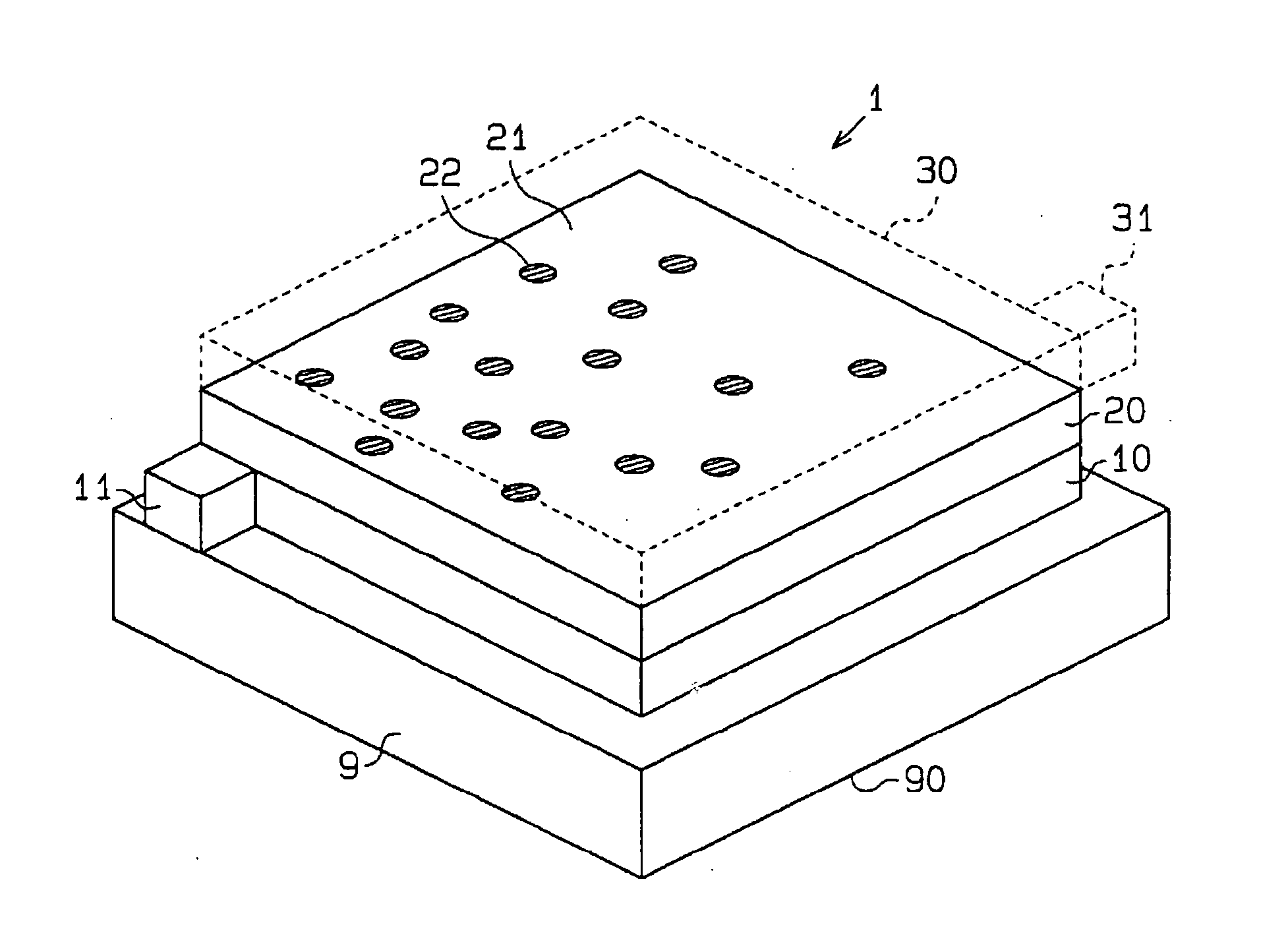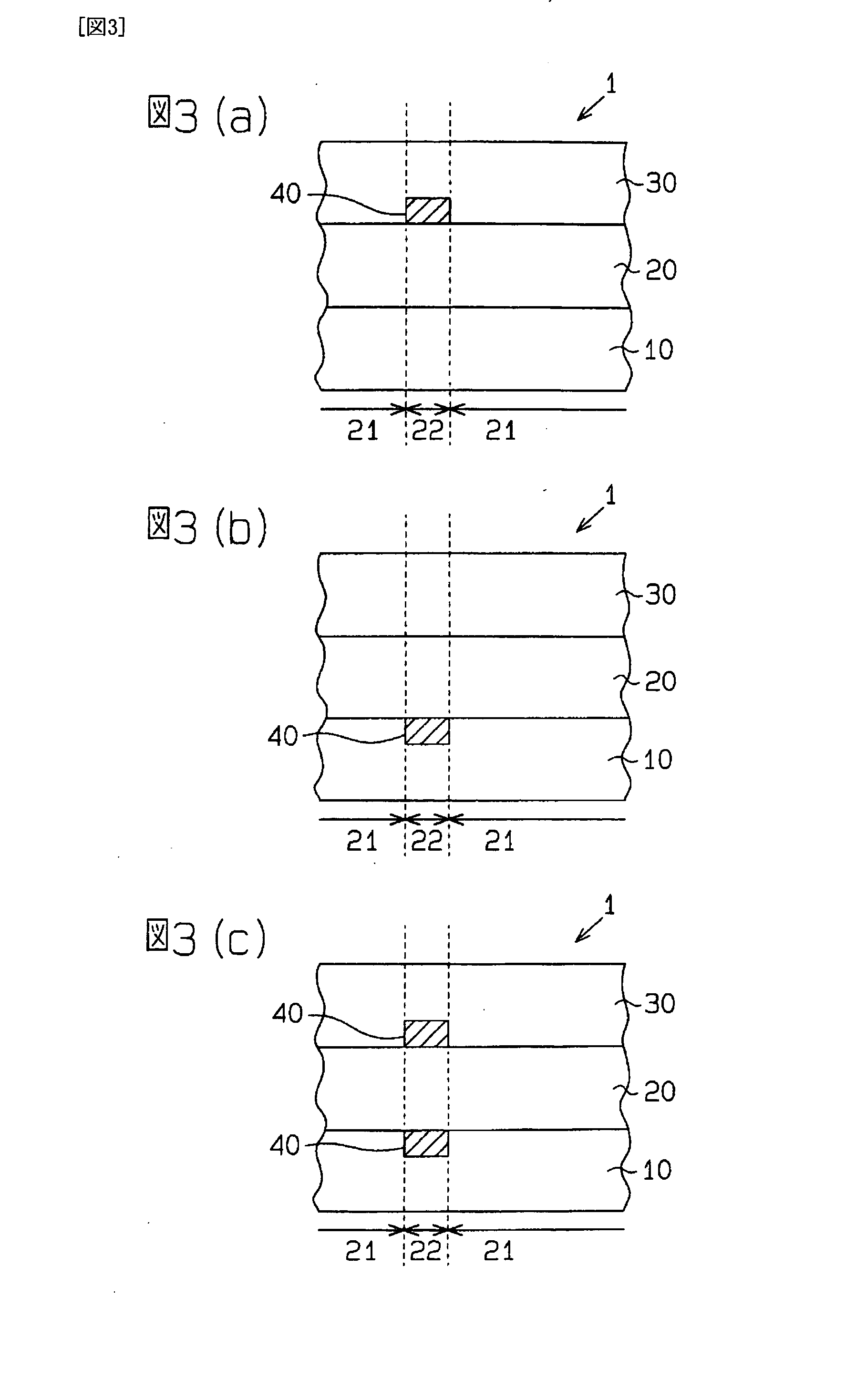Electric Field Light Emitting Element
a technology of light emitting element and electric field, which is applied in the direction of discharge tube/lamp details, discharge tube luminescnet screen, discharge tube/lamp details, etc., can solve the problems of uneven luminance throughout the element, affecting the light intensity of the element, and extremely limited materials for forming the organic el elemen
- Summary
- Abstract
- Description
- Claims
- Application Information
AI Technical Summary
Benefits of technology
Problems solved by technology
Method used
Image
Examples
Embodiment Construction
[0054] An electroluminescence element according to one embodiment will be described below with reference to FIGS. 1 to 4. In this embodiment, the electroluminescence element is an organic EL element having a substantially uniform luminance throughout the element as a desired state of the luminance distribution of the element. In FIGS. 1 to 4, same, equivalent or like members are given same numbers. In addition, FIGS. 1 to 4 do not represent the actual organic EL element, but schematically show its configuration for explaining its configuration and the like, and the dimension of one or several parts is extremely exaggerated. In addition, the hatching in the cross-sectional view is omitted in some cases.
[0055]FIG. 1 shows a schematic perspective view of a bottom emission type organic EL apparatus in which an organic EL element 1 according to the present invention is deposited on a transparent substrate 9, and light is extracted to outside from the side of the transparent substrate 9....
PUM
 Login to View More
Login to View More Abstract
Description
Claims
Application Information
 Login to View More
Login to View More - R&D
- Intellectual Property
- Life Sciences
- Materials
- Tech Scout
- Unparalleled Data Quality
- Higher Quality Content
- 60% Fewer Hallucinations
Browse by: Latest US Patents, China's latest patents, Technical Efficacy Thesaurus, Application Domain, Technology Topic, Popular Technical Reports.
© 2025 PatSnap. All rights reserved.Legal|Privacy policy|Modern Slavery Act Transparency Statement|Sitemap|About US| Contact US: help@patsnap.com



